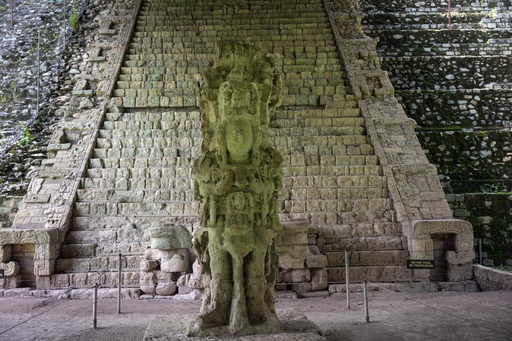
WASHINGTON – Research indicates that long before the ancient Maya constructed their iconic temples, their predecessors were already reshaping the environment of Central America’s Yucatan peninsula.
Archaeologists employing drones and Google Earth imagery have uncovered a 4,000-year-old network of earthen canals in present-day Belize. This significant discovery was detailed in a study published in the journal Science Advances.
Eleanor Harrison-Buck, a co-author of the study from the University of New Hampshire, explained the importance of aerial imagery in identifying a unique pattern of zigzagging linear canals that stretch for several miles through wetland areas.
Subsequent excavations were carried out within Belize’s Crooked Tree Wildlife Sanctuary, where researchers found ancient fish canals combined with holding ponds that were utilized to funnel and capture freshwater fish like catfish.
Study co-author Marieka Brouwer Burg from the University of Vermont noted that “barbed spearpoints” discovered in close proximity likely served as pointed tools attached to sticks for fishing purposes.
The canal systems were established by semi-nomadic groups up to 4,000 years ago in the Yucatan coastal plain. The study suggests these structures might have been in use for more than a millennium, coinciding with the “formative” period when the Maya started forming permanent agricultural communities and a unique culture began to develop.
Claire Ebert, an archaeologist from the University of Pittsburgh who was not part of the study, remarked on the significance of such extensive landscape alterations at such an early date, highlighting that it demonstrates early society’s capacity for construction and environmental manipulation.
During the peak of the Maya civilization, inhabitants of this area constructed impressive temples, roads, pyramids, and a variety of other significant monuments. They also innovated complex writing systems, mathematics, and astronomical knowledge. Ebert pointed out that much more is known about this later Maya period due to the numerous prominent archaeological sites from that time.
This recent study, however, suggests a deeper connection between the earlier inhabitants and the eventual rise of Maya culture. The ancient fishing channels may have been instrumental in supporting the Maya’s monumental architecture, allowing pyramids to soar above the dense Yucatan jungle.
“Continuit,” remarked University of Pennsylvania archaeologist Jeremy Sabloff, who was not involved in the research.
On a practical basis, the fish-trapping canals likely played a crucial role in helping the early civilizations diversify their food supply and sustain an increasing population, thereby laying the groundwork for the cultural advancements that would follow.
